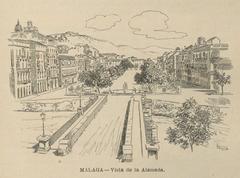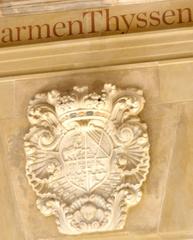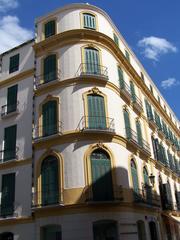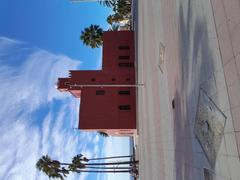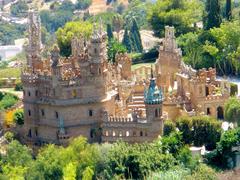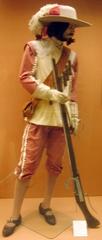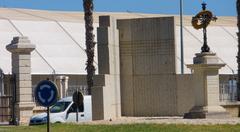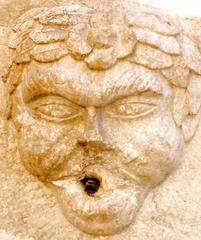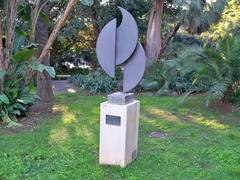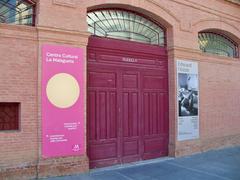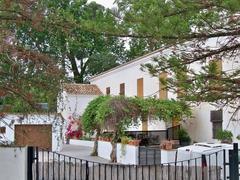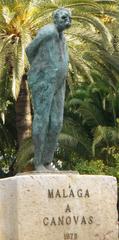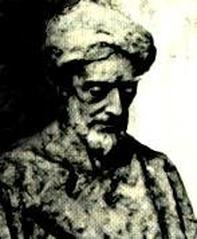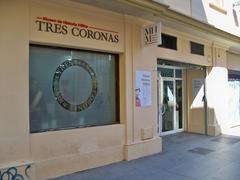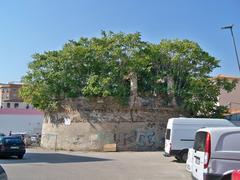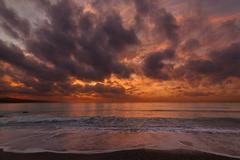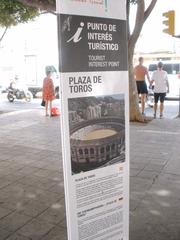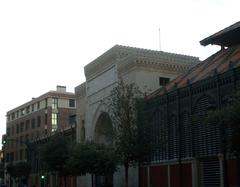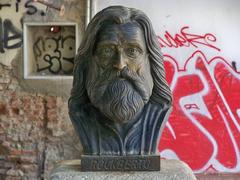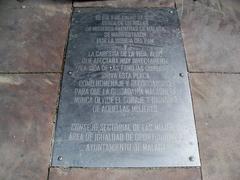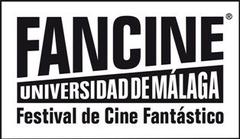La Araña, Málaga: Visiting Hours, Tickets, and Historical Sites
Date: 17/08/2024
Introduction
Nestled in the eastern part of Málaga, Spain, La Araña is a captivating coastal neighborhood that offers visitors a unique blend of historical, cultural, and natural attractions. This area is renowned for its archaeological significance, with evidence of human habitation dating back to prehistoric times. From the Yacimientos Arqueológicos de la Araña, which provide insights into the lives of Neanderthals and early Homo sapiens, to the influences of Phoenician, Roman, and Moorish cultures, La Araña serves as a living museum of human history (Andalucia.org; Wikipedia).
La Araña is not just about ancient history; it also boasts modern attractions and cultural events that celebrate its rich heritage. The area offers an array of activities for all types of visitors, from exploring ancient caves and archaeological sites to enjoying local festivals like the Málaga Flamenco Festival and the Málaga Feria. Whether you’re a history enthusiast, a culture lover, or just looking to unwind by the beach, La Araña has something to offer (Travel Spain 24).
This comprehensive guide aims to provide you with all the information you need for an unforgettable visit to La Araña. You’ll find details on its historical significance, practical visitor information, cultural highlights, and essential tips to make the most of your trip.
Table of Contents
- Introduction
- Historical Significance of La Araña
- Visitor Information
- Cultural Significance and Modern Attractions
- Visitor Tips and Recommendations
- FAQ
- Conclusion
Historical Significance of La Araña
Prehistoric Inhabitance
La Araña, located in Málaga, Spain, is a site of immense historical significance, with evidence of human habitation dating back to prehistoric times. The archaeological sites in La Araña, known as the Yacimientos Arqueológicos de la Araña, reveal that the area was inhabited by Neanderthals and early Homo sapiens. The natural resources and favorable climate made it an ideal location for early human settlement. Visitors can explore these sites to learn more about the Neanderthal times, the Neolithic period, and the Bronze Age (Andalucia.org).
Phoenician and Roman Influence
The history of Málaga, including La Araña, is deeply intertwined with the Phoenician and Roman periods. The Phoenicians founded the colony of Malaka around 770 BC, which later came under the control of Carthage in the 6th century BC. By 218 BC, the area was ruled by the Roman Republic and eventually became part of the Roman Empire. The Roman influence is evident in the urban planning and infrastructure, with remnants of Roman roads, aqueducts, and buildings still visible today (Wikipedia).
Medieval Period and Moorish Rule
During the medieval period, Málaga, including La Araña, was under Moorish rule. The city of Mālaqa thrived as a center of trade and culture. The Alcazaba and the castle of Gibralfaro are significant monuments from this era, showcasing the architectural prowess of the Moors. The city had a thriving pottery industry, and its ornamental vases, known as Málagan lusterware, were recognized throughout the Mediterranean. Trade was regulated by the “Proper Governance of the Souk,” a treatise on business accountability written by Abu Abd Allah al-Saqati of Mālaqa in the 13th century (Wikipedia).
Christian Reconquest and Early Modern Era
The Christian reconquest of Málaga in 1487 marked a significant turning point in the history of La Araña. The city was repopulated by Christians from various regions of Spain, and new religious convents and monasteries were established. The Mudéjars, Muslims who remained in Spain after the Christian reconquest, played a crucial role in the cultural and architectural development of the area during this period (Wikipedia).
Industrial Revolution and Economic Expansion
The 19th century brought significant economic expansion and industrialization to Málaga, including La Araña. The city became an important European manufacturing center, with the establishment of ironworks and other industrial enterprises. Manuel Agustin Heredia’s ironworks, La Constancia, became the country’s leading iron foundry in 1834. This period also saw the rise of powerful Málagan bourgeois families who gained influence in national politics (Wikipedia).
Archaeological Discoveries and Museums
La Araña is home to several archaeological sites and museums that offer a glimpse into its rich history. The Archaeological Sites of La Araña provide insights into the prehistoric era, while the Archaeological Exhibition Hall of the Alcazaba showcases the techniques and use of ceramics in Muslim Málaga from the 11th to the 14th centuries. The Lagar de Torrijos Ecomuseum, a home-winery dating back to 1843, preserves the traditional methods of wine and olive oil production (Visita Málaga).
Visitor Information
Visiting Hours and Tickets
- Yacimientos Arqueológicos de la Araña: Open daily from 10 AM to 6 PM. Tickets are priced at €5 for adults and €3 for children and seniors.
- Archaeological Exhibition Hall of the Alcazaba: Open from 9 AM to 8 PM. Entrance is included with the general admission ticket to the Alcazaba, priced at €3.50.
- Lagar de Torrijos Ecomuseum: Open on weekends from 10 AM to 2 PM. Admission is free.
Travel Tips and Accessibility
- Best Time to Visit: The best time to visit Málaga is between April and August when there are 13-14 hours of daylight, perfect for exploring the city’s natural landscapes and historical sites.
- Getting There: Málaga is well-connected by air, train, and bus. From the city center, La Araña is easily accessible by car or public transport.
- Accessibility: Most historical sites in La Araña are wheelchair accessible. It is advisable to check specific accessibility options in advance.
Cultural Significance and Modern Attractions
Today, La Araña and the surrounding areas of Málaga continue to celebrate their rich cultural heritage through various festivals and events. The Malaga Flamenco Festival, held in mid-July, showcases Spain’s best dancers and guitarists. The Malaga Feria in August is one of the largest festivals in Andalucia, attracting over a million visitors. These events highlight the vibrant cultural scene and the deep-rooted traditions of the region (Travel Spain 24).
Visitor Tips and Recommendations
- Explore Archaeological Sites: Make sure to visit the Yacimientos Arqueológicos de la Araña to learn about the prehistoric era and the Archaeological Exhibition Hall of the Alcazaba for insights into Muslim Málaga.
- Attend Festivals: Experience the local culture by attending the Malaga Flamenco Festival in July and the Malaga Feria in August.
- Visit Museums: The Málaga Museum and the Municipal Heritage Museum (MUPAM) offer extensive collections of fine arts and archaeological artifacts, providing a deeper understanding of the region’s history.
- Enjoy Local Cuisine: Don’t miss the opportunity to sample local delicacies such as “espetos” (grilled sardines) and traditional tapas in the city’s vibrant food scene.
FAQ
Q: What are the visiting hours for the Yacimientos Arqueológicos de la Araña?
A: The Yacimientos Arqueológicos de la Araña are open daily from 10 AM to 6 PM.
Q: How much are the tickets for the Archaeological Exhibition Hall of the Alcazaba?
A: Entrance to the Archaeological Exhibition Hall of the Alcazaba is included with the general admission ticket to the Alcazaba, priced at €3.50.
Q: When is the best time to visit Málaga?
A: The best time to visit Málaga is between April and August when there are 13-14 hours of daylight, perfect for exploring the city’s natural landscapes and historical sites.
Q: Are the historical sites in La Araña wheelchair accessible?
A: Most historical sites in La Araña are wheelchair accessible. It is advisable to check specific accessibility options in advance.
Conclusion
La Araña in Málaga is a captivating destination rich in history and cultural heritage. From its prehistoric roots to its vibrant modern-day festivals, there is something for every visitor to explore and enjoy. By following our tips and recommendations, you can fully immerse yourself in the historical significance and cultural charm of this remarkable area.
